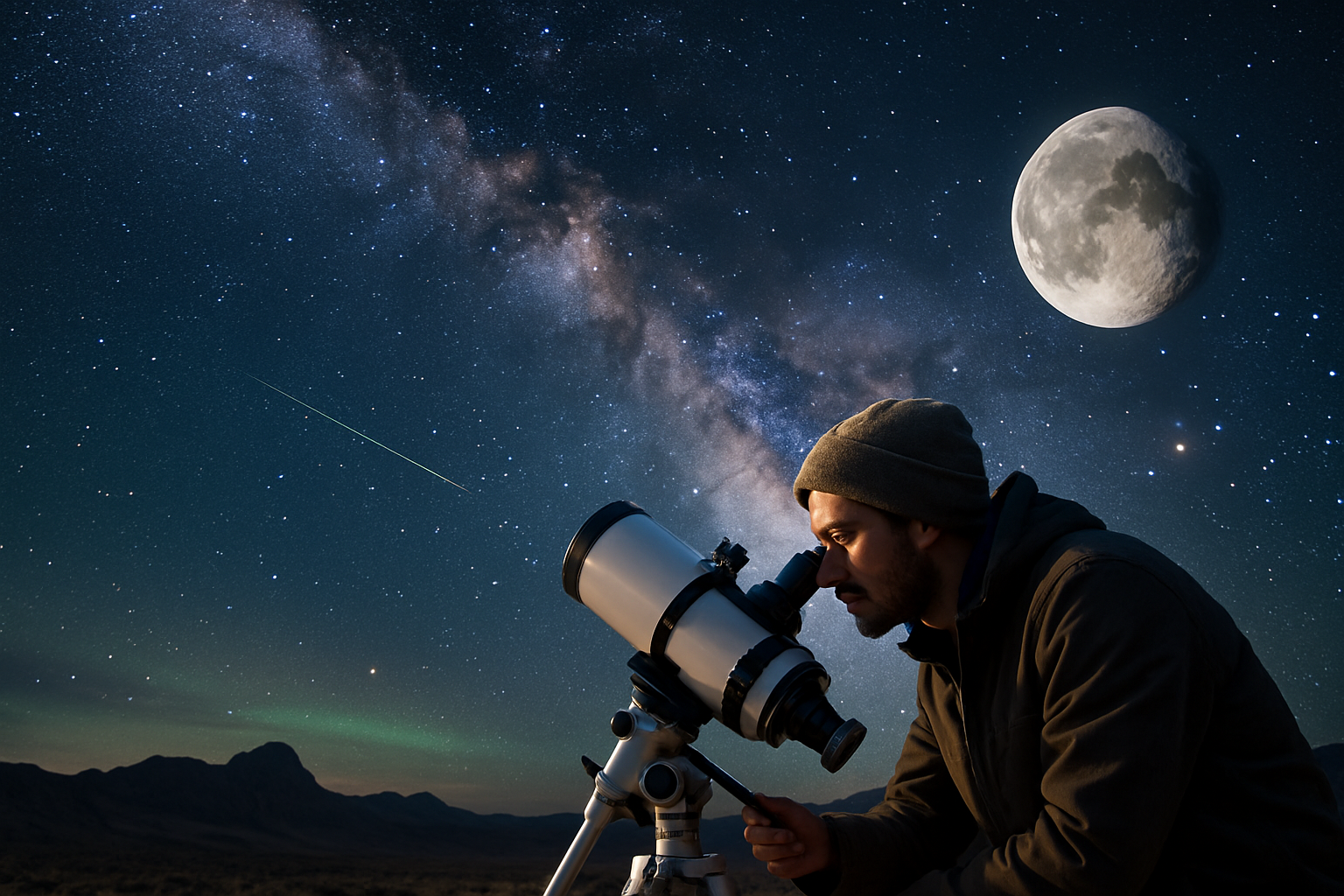Astro-Tourism: Exploring the Night Sky's Hidden Wonders
Stargazing has captivated humanity since ancient times, but a new travel trend is taking our fascination with the cosmos to new heights. Astro-tourism, the practice of traveling to dark-sky destinations for celestial observation, is rapidly gaining popularity among adventure seekers and astronomy enthusiasts alike. This emerging niche offers travelers a chance to disconnect from the bright lights of urban life and reconnect with the awe-inspiring wonders of the night sky.

In recent years, the trend has gained momentum, driven by a combination of factors. Advances in astrophotography equipment have made it easier for amateur astronomers to capture stunning images of celestial objects. Social media has played a role in popularizing these images, inspiring others to seek out dark-sky experiences. Additionally, the growing interest in sustainable and experiential travel has led more people to seek out unique, nature-based adventures.
Choosing the Perfect Dark-Sky Destination
Selecting the right location is crucial for a successful astro-tourism experience. The International Dark-Sky Association (IDA) certifies locations around the world that meet strict criteria for sky quality and stewardship of the night environment. These designated dark-sky places range from remote wilderness areas to small towns that have implemented lighting ordinances to preserve their night skies.
Some popular astro-tourism destinations include the NamibRand Nature Reserve in Namibia, known for its extraordinarily dark skies and desert landscapes, and the Aoraki Mackenzie International Dark Sky Reserve in New Zealand, which offers breathtaking views of the southern night sky. In North America, places like Utah’s Natural Bridges National Monument and the Jasper Dark Sky Preserve in Canada attract stargazers with their pristine night skies and stunning natural scenery.
Planning Your Astro-Tourism Adventure
A successful astro-tourism trip requires careful planning and consideration of several factors. Timing is crucial, as the phase of the moon and the time of year can significantly impact visibility. New moon periods offer the darkest skies, while different seasons showcase different celestial objects and constellations.
Weather conditions also play a vital role in stargazing. Clear, dry nights with low humidity provide the best viewing conditions. It’s essential to check long-term weather forecasts and plan accordingly, keeping in mind that mountain and desert locations often offer more stable atmospheric conditions.
Accommodation choices can enhance the astro-tourism experience. Many dark-sky destinations now offer specialized lodging options, from astronomy-themed hotels with on-site observatories to glamping sites with transparent bubble tents for unobstructed sky views. These unique accommodations not only provide comfort but also add an extra layer of immersion to the stargazing experience.
Equipment and Technology for Celestial Observation
While the naked eye can reveal much of the night sky’s beauty, the right equipment can significantly enhance the experience. Binoculars are an excellent starting point for beginners, offering a wider field of view and easier navigation than telescopes. For more serious observers, portable telescopes designed for travel can provide detailed views of planets, star clusters, and distant galaxies.
Technological advancements have also revolutionized astro-tourism. Smartphone apps like Stellarium and Sky Map use GPS and augmented reality to help identify celestial objects and constellations. More advanced tools, such as computerized telescope mounts with goto capabilities, can automatically locate and track specific objects in the night sky.
For those interested in astrophotography, modern DSLR cameras paired with wide-angle lenses can capture stunning images of the Milky Way and star trails. Time-lapse photography has become particularly popular, allowing astro-tourists to create mesmerizing videos of the night sky’s movement.
The Cultural and Educational Aspects of Astro-Tourism
Astro-tourism offers more than just pretty views; it provides a unique opportunity to learn about astronomy, culture, and the environment. Many dark-sky destinations offer educational programs led by professional astronomers or local guides. These programs often combine stargazing with lessons on celestial navigation, mythology associated with constellations, and the importance of dark sky preservation.
In some locations, astro-tourism intersects with cultural tourism, offering insights into how different civilizations have interpreted and utilized the night sky. For example, visitors to Chaco Culture National Historical Park in New Mexico can learn about the astronomical practices of the ancient Puebloan people while enjoying some of the darkest skies in the United States.
Stellar Tips for Aspiring Astro-Tourists
-
Adapt to the dark: Allow your eyes at least 20 minutes to fully adjust to the darkness for optimal stargazing.
-
Bring red light: Use a red-light flashlight or headlamp to preserve your night vision while moving around or reading star charts.
-
Layer up: Even in warm climates, temperatures can drop significantly at night. Pack warm, layered clothing.
-
Learn basic navigation: Familiarize yourself with key constellations and celestial objects before your trip.
-
Respect the environment: Follow Leave No Trace principles to help preserve dark-sky areas for future generations.
As light pollution continues to increase globally, astro-tourism stands as a testament to the enduring human fascination with the cosmos. This growing trend not only offers unforgettable travel experiences but also plays a crucial role in raising awareness about the importance of dark skies. By venturing into the world’s remaining dark places, travelers can reconnect with the vast universe above and gain a new perspective on our place within it. Whether you’re an amateur astronomer or simply someone who marvels at a star-filled sky, astro-tourism offers a unique and awe-inspiring way to explore our world and the infinite expanse beyond.





